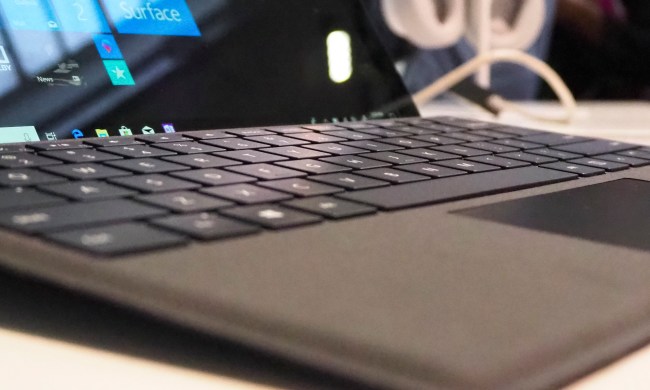Microsoft’s approach to a user interface really hasn’t changed structurally since Windows 95 — it’s just gotten prettier and more feature-packed. The big exception is Windows 8, which didn’t sit well with Microsoft’s longtime customers and forced the interface back into the traditional taskbar layout with Windows 8.1. Even the Surface devices default to the desktop mode although Microsoft’s Tile design remains intact. The only exception is the Xbox console.
Now Microsoft’s Windows Core OS aims to do what Windows 8 couldn’t: Provide a more unified but custom experience across all devices. So, what is Windows Polaris then? We’ll explain, while also detailing how its related to Windows Core OS. Keep in mind that none of the information provided below has been officially announced by Microsoft.
Windows Core OS
Currently, all Windows-based devices share the “OneCore” concept: They all have different operating systems built on the same Windows-based “core” foundation. That means you can’t install the Xbox operating system on a desktop PC and expect it to function exactly like Windows 10.
Windows Core OS aims to change that. Anonymous sources and reports have hinted at its existence since the latter months of 2017. The project aims to create one operating system that works on all devices, but make it modular so it can react more swiftly to changes in the market.
For instance, manufacturers currently looking to build new devices must opt for prepackaged versions of Windows, possibly containing features they don’t need. With a modular design, components can be added and removed without much effort.
Windows Core OS, then, would be similar to Android. It would be a bare-bones platform, devoid of any proprietary software, provided to developers and manufacturers to tailor Windows to a specific device, just as Samsung does with its phones and tablets. Each new device could have its own unique Windows experience and no unnecessary processes or components lurking behind the scenes.
This customization should, in turn, speed up battery life and performance and make the whole experience easier to understand for the casual user. However, this opens the door to “pure” Surface devices sold by Microsoft, similar to how Google offers the pure Android experience on its Pixel-branded devices.
Composable Shell
Microsoft began to move toward a unified experience in 2015, when it combined its kernel and OS core (aka OneCore) across all Windows devices. Universal Windows Platform (UWP) apps served through the Microsoft Store are another component of that plan. With those elements now in place, the last piece of the Windows Core OS puzzle is Composable Shell (C-Shell or CShell).
C-Shell is a modular interface that runs on top of Windows Core OS (which is also modular) and lets Microsoft and device makers overhaul the look and feel of the operating system for specific devices, without having to create an entirely new operating system. It even allows models to shift between user interfaces depending on their usage at the time — a little like how Microsoft’s already existing Continuum feature works.
Again, we can circle back to Samsung and how it modifies Android. In this case, developers and manufacturers can design a “launcher” that changes the interface to create a custom look versus the “pure” interface served up on Surface devices, for example. These designs can “shift” depending on how the device is used.
That said, C-Shell will supposedly have multiple variants called “composers” that are each designed for a specific type of interface, like desktop, tablet, Windows Mixed Reality, and so on.
That’s where Polaris came in.
Polaris burned out
If Windows Core OS is the modular foundation, then Polaris was a C-Shell composer that created the desktop interface supposedly for low-end devices. It was also the successor to Windows 10 in S Mode.
According to Windows Central, Polaris was Microsoft’s attempt to strip back all the legacy elements of the Windows experience to shed some fat and become far better for it. That meant better performance, especially on lower-end machines, improved security, and better battery life on portable devices.
Polaris was expected to make Windows easy to manage through a simplification of settings and back-end systems. A new UWP version of the Windows File Explorer was to make navigation easier for those who hadn’t been brought up on decades of Windows usage. Likewise, the Settings app would have replaced much of the typical functions of the outdated (and still included) Control Panel, making accessing certain back-end functions more intuitive.
Andromeda was another composer for foldable mobile devices, but it too was discontinued alongside Polaris. Meanwhile, Oasis will provide the interface for Windows Mixed Reality, while Aruba will target the Surface Hub.
What will be lost with Windows Core OS?
A significant component of all that streamlining is removing functions and features that have been part of Windows for decades. While that’s great for casual users who didn’t need advanced or legacy features anyway, for those more versed in Windows usage, there could be some notable absences from Windows Core OS.
The traditional File Explorer and Control Panel could be just the tip of the iceberg. Certain apps, like Microsoft’s Paint and Notepad, could be lost, alongside things like fax support. Win32 app functionality may be removed as well, making it so anything built not using Microsoft’s UWP wouldn’t function.
Though it’s unlikely Microsoft would remove that functionality entirely, the company is still keen on pushing people toward the Microsoft Store. There are benefits to it, as Android and iOS have leveraged their application marketplaces successfully for years. However, it’s likely not a feature that can appeal to every Windows device owner.
How do you get it?
You can’t get it. The company canceled Polaris and Andromeda with the Windows 10X (Santorini) popularity. Someone leaked an old Polaris build, but the company has not been actively developing either Windows Core OS composer since 2018.
Initially, developers targeted Andromeda to work with the Surface Duo. Instead, Microsoft used Android.



